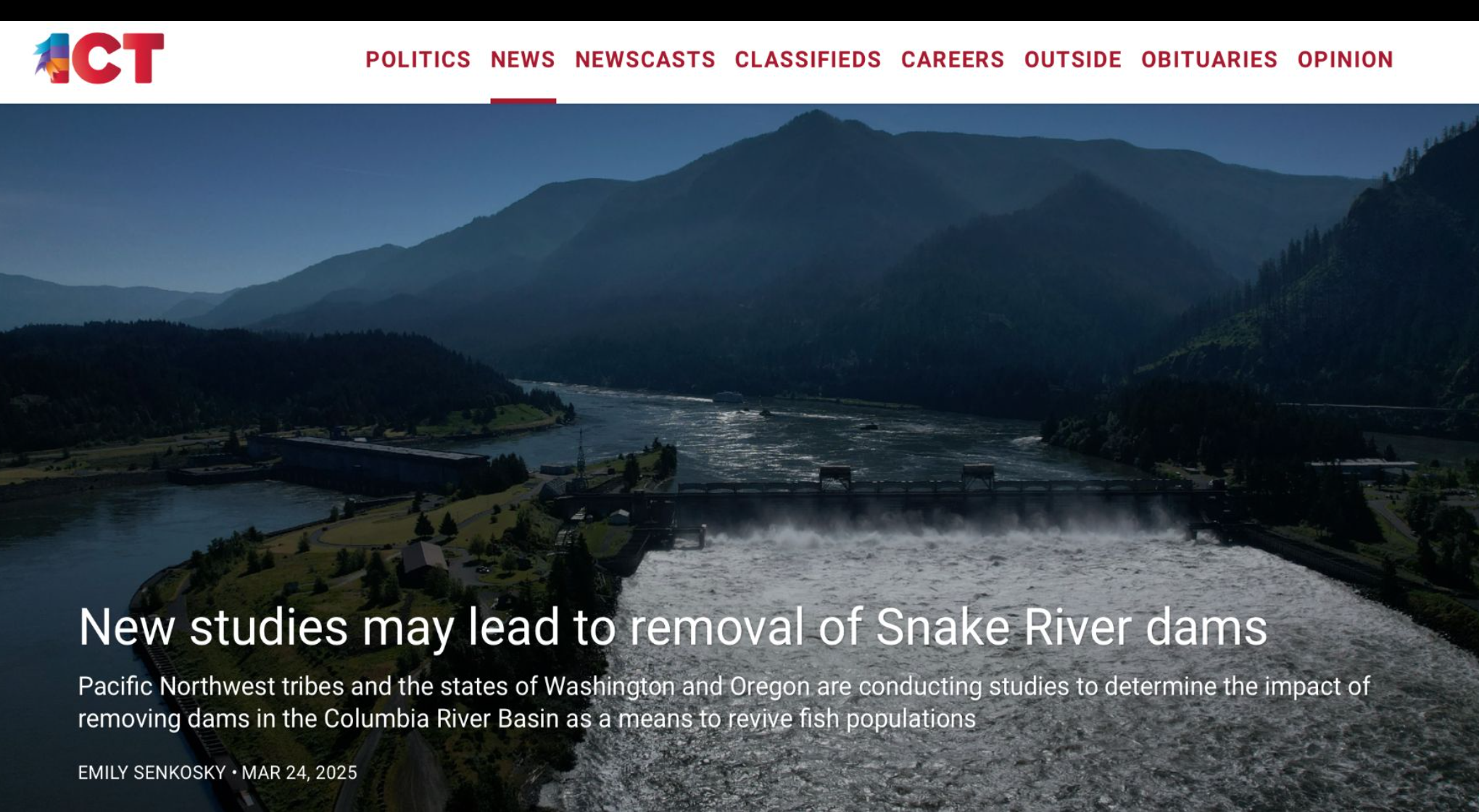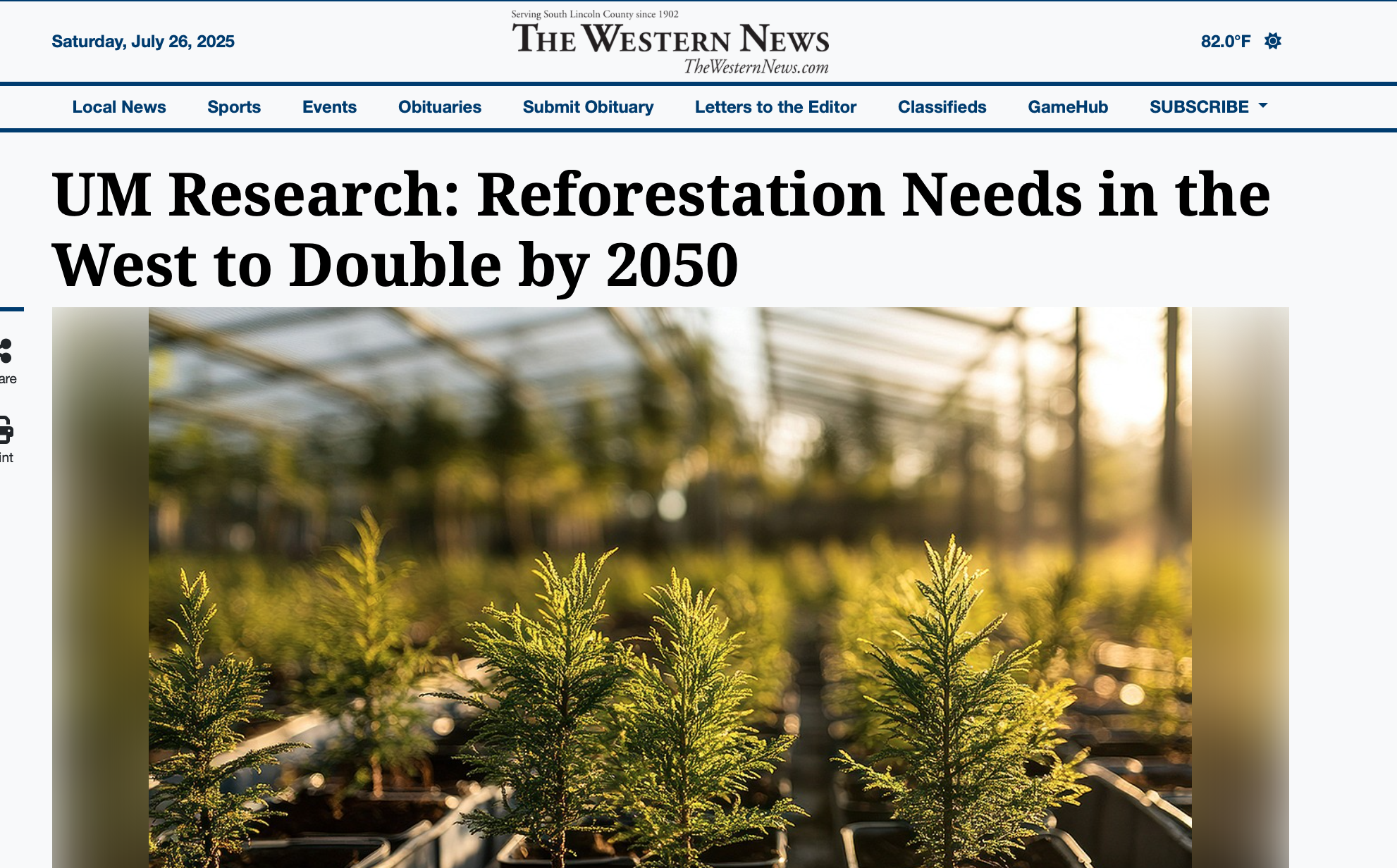Internet star Osprey helps to locate toxins in Montana rivers
This story is on the world’s oldest known osprey, Iris, who has become an online sensation and a living indicator of watershed health in Montana where there is a toxic legacy of mining and milling near rivers. At 29, this bird has outlived the odds to become a cherished internet star whose is showing the value of her species as an indicator for when there is trouble in the water.
Federal cuts impacts on National Park communities
As national parks face increasing political and financial pressure, residents worry their livelihoods—and the broader future of rural economies dependent on public lands—are at risk. This piece focused on a small gateway community near Yellowstone National Park that is sounding the alarm over proposed federal funding cuts and staff reductions that could undermine the park’s operations and devastate the local tourism-based economy, as well as cultural identity, of their town.
New studies on the debate surrounding Snake River dams
Recent studies by Pacific Northwest tribes, states, and federal agencies are providing critical data on replacing the energy, water, and transportation services currently supported by the lower Snake River Dams—laying the groundwork for their possible removal to help recover endangered salmon and steelhead populations. The research, spurred by a 2024 agreement between tribes and the Biden administration, shows that dam removal is feasible and outlines options for infrastructure replacement, with costs estimated between $1.7 and $3.5 billion.
Western forests are quickly disappearing
In the Western U.S., a steadily hotter climate and increasing wildfire are demanding reforestation, with forest loss projected to double—or even triple—by 2050. This story is on research that shows how dwindling seed production, workforce shortages, and post-fire sensitivity of soils are leaving a growing gap of about 3.8 million acres of forest. The current reforestation pipeline cannot fill without major infrastructure, policy, and financing changes.
Montana research and NASA aid drought-stricken agriculture
This was a story for the University of Montana’s annual magazine. It centered on university researchers utilizing NASA satellite data to develop open science tools that help North African agricultural communities adapt to climate change impacts such as drought. The initiative culminated in a four‑day workshop in Algeria that trained local scientists and global stakeholders on applying climate data to tackle agricultural challenges using open and reproducible scientific methods.
One fish per panel
This piece was in the July print edition of High Country News, this narrative explores a solar initiative by the Nez Perce Tribe aimed at catalyzing the removal of four dams that are decimating salmon populations in the Pacific Northwest. The piece weaves together nuances of the energy transition, how it fits into natural resource law and policy, and how that applies to Indigenous sovereignty—three topics I hope to report on for the remainder my career.
Montana’s future with grizzly bears
Grizzlies are emblematic to the West and particularly to Montana, where most grizzly bears in the lower 48 call home. In the Daily Interlake, this piece dissects research that is helping inform the social, ecological, and policy aspects of a future with grizzlies. Thanks to species protections and concerted, collaborative conservation efforts, grizzly bear populations have increased since their listing on the Endangered Species Act in 1975—but this is causing tension on the increasingly developed landscape.
Funk’s workshop
This is a story about a sustainable blacksmith, Jeffrey Funk, in Big Fork, Montana. The story in the Magazine Mountain Outlaw talks about his legacy in a craft that is often forgotten about in the modern era. It also examines the value of being able to manifest ideas into tangible objects—and how this way of life can be synergistic with living in reciprocity with nature.
Missoula is in a feline fix
This was an adventure of a story to write, about the nuanced situation of a cat colonies in the city of Missoula, Montana.The reporting included canvasing with a modern-day “cat trapper”, talking to biologists about how domestic cats are impacting the local ecosystem, investigating city ordinances, and tracking down these large cat colonies throughout the urban cityscape. Overall, this story in The Pulp was meant to unpack how urbanization is causing changing dynamics between humans and wildlife.
Research on a changing elk population
This story in Western News is on University of Montana wildlife biologists and students who are piecing together factors influencing local elk populations. This research examines predator-prey interactions, habitat changes, and human impacts to determine elk distribution and mortality causes. The findings aim to inform effective management strategies for sustaining healthy elk numbers in the region.
The growing avocado industry’s impact on Colombian freshwater
This was my first environmental justice piece about the world’s ever-increasing appetite for avocados, and how Colombia is risking the páramo, one of its key ecosystems, to satiate it.These rare environments that provide fresh water to tens of millions of people — the majority of the Colombian population. This piece examines the significant uptick in avocado production in recent years and how that is causing socioeconomic and environmental impacts for communities downstream.
ChatGPT and its impacts on the writing profession
In an article for Business Insider I wrote about an experience I had in 2021 where I got access to OpenAI's GPT-3 before it was released to the public. Once it was released into the wild, I cross compared my original experience to what ChatGPT had become, and its advancing capability to generate coherent and human-like text. This article uses that experience to unpack the potential impact of AI on writing professions and what it will take to be a journalist in an era of machine-generated material.
The Key Assets That Make Women Excellent Leaders
This piece in Entrepreneur Europe highlights the unique strengths women bring to leadership and entrepreneurship, emphasizing their collaborative approach, empathy, and resilience. It underscores the importance of recognizing and leveraging these attributes to foster a more inclusive and effective business environment. The piece also calls for continued support and opportunities to empower women entrepreneurs, aiming to bridge existing gender gaps in the business world.












